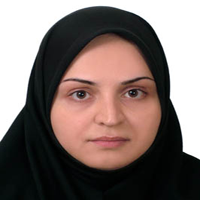Reuse of Sewage Sludge for Agricultural Soil Improvement(Case Study: Kish Island)
Author(s):
Abstract:
Sludge from wastewater treatment plants is a valuable source of nitrogen, phosphorus and potassium which are necessary for the plants growth. The purpose of this research was to control sludge quality to use it for soil improvement in Kish Island, Iran. Because of soil with low qualified for agricultural activities and high import expenses of fertile soils from outside of the Island, application of sludge as a cheap source of soil amendment is an easy and economical mean to improve the soil in Kish Island. Comparison of laboratory data of domestic sludge with global standard has shown that it has suitable for application on landscapes and agriculture from the point of view of fertility and heavy metals concentration. Biological data has also shown that the sludge was in class A or B of EPA standard, to fecal coliform, based on the ambient conditions such as water, air, temperature, sun radiation and storage time. The soil test data indicated that salinity, sodium and calcium ions were between 5000-7000 mg/kg which cause a decrease in plant's growth. Transplanting of garden petunia in the region has been done in different samples mixed with sludge rate of 0, 25, 50, 75 and 100 ton/ha during December 2008 to March 2009. In the first period of the growth study, the results have shown a decrease in the amended soil with sludge retard in comparison with control plant, but after 5 months probably because of spring rains and decrease in the salinity of amended soil, the plant has shown very good growth in leaves and petal, whereas the control plant was dried. Soil and plant analyses were also approved the results because physical (humidity increase) and chemical (EC decrease) characteristics of the amended soil with sludge were improved. Most of the time, the concentrations of micro-nutrients such as iron, manganese, zinc, copper and nutrients in soil and leaves showed an increase in values by an increase in the rate of applied sludge. Other results were not shown considerable variation in accessible phosphorus but noticeable decrease in potassium. Of course, in some special cases, negligible changes in cadmium and lead concentrations of the plant have been observed. In addition, the soil phosphorous content had negligible changes and the soil potassium content had a decreased rate in the amended soil. Finally, it is concluded that for sludge application, it is necessary to check agronomic nutrients levels and heavy metals accumulation. However it is also recommended to use any kind of salt resisted native plants for landscapes. In case of sensitive plant, sludge should be added at least 6 months in advance to ensure that soil physical and chemical condition are achieved.
Language:
Persian
Published:
Journal of Water & Wastewater, Volume:22 Issue: 78, 2011
Page:
85
magiran.com/p884881
دانلود و مطالعه متن این مقاله با یکی از روشهای زیر امکان پذیر است:
اشتراک شخصی
با عضویت و پرداخت آنلاین حق اشتراک یکساله به مبلغ 1,390,000ريال میتوانید 70 عنوان مطلب دانلود کنید!
اشتراک سازمانی
به کتابخانه دانشگاه یا محل کار خود پیشنهاد کنید تا اشتراک سازمانی این پایگاه را برای دسترسی نامحدود همه کاربران به متن مطالب تهیه نمایند!
توجه!
- حق عضویت دریافتی صرف حمایت از نشریات عضو و نگهداری، تکمیل و توسعه مگیران میشود.
- پرداخت حق اشتراک و دانلود مقالات اجازه بازنشر آن در سایر رسانههای چاپی و دیجیتال را به کاربر نمیدهد.
In order to view content subscription is required
Personal subscription
Subscribe magiran.com for 70 € euros via PayPal and download 70 articles during a year.
Organization subscription
Please contact us to subscribe your university or library for unlimited access!



